Last Updated on: 5th August 2024, 02:47 pm
It shouldn’t come as much of a surprise that Şanlıurfa Province, home to sites like Göbekli Tepe and Harran, has plenty more to see within its borders. Following a morning visit to Karahan Tepe, I arranged for a driver and guide to take me onward to places like Soğmatar Ancient City, Şuayb (Jethro) and the Bazda Caves – all well worth the time and expense.
If you’ve visited Harran and are intrigued by the moon-worshipping cult of the Sabians, you can learn a lot more by visiting Soğmatar. Şuayb, meanwhile, is home to ancient Roman ruins but is said to be where Jethro, father-in-law to Moses, once lived. And the Bazda Caves are an overlooked but fascinating series of caves formed from centuries of quarrying.
Entry to each of these sites is free, but given their obscurity, the only way to get around is via private vehicle. See below to learn more about how I arranged my trip.
Soğmatar Ancient City
For centuries, Soğmatar was a sacred site of the Sabians, the cult of moon-worshippers centered at nearby Harran, about 50 km away. Amazingly, moon worship persisted in the region from at least the 3rd millennium BC up until the 13th century AD!
(See our Harran guide for an introduction to the Sabians.)

Also known as Sumatar Harabesi, Soğmatar remained abandoned for many years. But as it contains dozens of wells, it long served as a watering hole for nomadic tribes. The current sleepy village built around the ruins and tombs only emerged as recently as the 1970s.

There are a lot of rock-cut tombs in Soğmatar, but the most interesting one is near the center of the village. Upon arrival, a local boy, immediately spotting us outsiders, came over to our car and led the way.

This impressive rock-cut chamber measures 5.1 by 4.3 meters. It dates from the 2nd century AD and contains numerous carvings of people – seemingly an entire family.

Here and elsewhere around Soğmatar, ancient Syriac inscriptions mention various individuals titled ‘Ruler of the Arabs.’
Apparently, this local dynasty consisted of military commanders who were subordinate to the King of Edessa (Urfa), who in turn was a vassal of Rome. And they likely ruled over the Arab-populated sections of Edessa in these pre-Islamic times.

However, despite the numerous other rock-cut tombs nearby, some scholars believe this chamber may actually be a temple. This is because of the star and crescent symbol, a symbol of the Sabians, carved on the side of the wall.
And as the Sabians often depicted their planetary deities in human form, the figures on the walls could potentially be their pantheon.


To me, the chamber felt much felt like a tomb, with the carvings of figures resembling the tombs of ancient Egypt.
But then again, the Kingdom of Edessa at the time was bordering the Persian Parthian Empire, whose main deity was Mithra. Despite being a solar deity, Mithra was commonly worshipped in dark caverns. So what we see here could potentially be a syncretism of Sabian and Mithraic traditions.

The chamber features an additional side room with its own niche – likely once home to either a statue or religious altar.
The walls and ceilings of this room are entirely blackened, as the space was inhabited by a Bedouin family during the 20th century.
Scholars still refer to this chamber as ‘Pognon’s Cave’ after French archaeologist H. Pognon who discovered it over 100 years ago.

Coming out of Pognon’s Cave, there was still a lot more to explore.
As is commonplace at such ancient places, locals have usurped the readily available stone from the ruins to build new structures. But oddly, most of these buildings weren’t even being used.

The entire area is centered around a tall mound in the middle – even much bigger than the mound of Harran. But more on that later. The next place to visit at Soğmatar is the large stone outcrop on the other side.

Though hardly evident from the bottom, this outcrop served as Soğmatar’s main place for religious rites. As you climb up. you’ll spot additional rock-cut chambers, though these were completely blocked off during my visit.

As you get higher, you’ll come face to face with two impressive figures carved in the natural rockface nearly two millennia ago.
The bust on the left is likely Sin, the moon god and primary deity of the Sabians. There’s a crescent behind his shoulders – hardly noticeable today due to discoloration.
According to anthropologist J. B. Segal, the faded Syriac inscriptions next to it credit someone named Sila for its creation. And he did so in honor of Tiridates, son of Adona.
Tiridates, son of Adona, is mentioned quite frequently in inscriptions throughout Soğmatar. He was likely the local military commander, and he may even be the main figure carved in Pognon’s Cave.

The full-figured man to the right of Sin is probably the Babylonian sun god Shamash, whom the Sabians also worshipped. While no inscription explicitly mentions this, the halo of solar rays around his head is a big giveaway.
An inscription next to the figure mentions a man named Ma’na having carved or commissioned it.

Reaching the top of the hill, you’ll find a series of inscriptions that are much more clear. They mention someone named Absamya, son of Adona – surely Tiridates’s brother.
Most of the texts around Soğmatar are of a memorial nature, while others mention particular astronomical phenomena occurring on certain dates.


While there are no ruins at the top of the hill, you can spot numerous circular pits, presumably used for animal sacrifices. The Sabians typically performed their rituals atop hills, most of which involved sacrifices and the pouring of libations.
According to 5th-century Christian bishop Jacob of Sarug, there was no hilltop in the region that was not soaking wet as a result of Sabian rites.
Having just come from the Neolithic site of Karahan Tepe, I immediately thought of the similar circular holes dug into the rocky hill there. There’s a good chance the Sabians absorbed some of their traditions and astronomical knowledge from that mysterious civilization. And perhaps this exact hill was the site of a Neolithic temple millennia prior.
But the most interesting thing about this hill is its unique position at the center of seven other temples built on the surrounding hilltops. At Soğmatar, there was one for the Sun, Moon, Venus, Mercury, Mars, Jupiter and Saturn.





The temples mostly seem to follow a circular design, and some are in much better shape than others.
According to legend, an underground chamber system linked them all. Interestingly, over in nearby Urfa, a similar tunnel is said to link Urfa Castle with the sacred pool below.
While I didn’t have time to hike up any of the distant hills, Marco M. Vigato of the Uncharted Ruins website did. And he writes of encountering numerous passageways filled with debris. He also came across things like altars and basins, likely relating to sacrifices.

It’s also from atop this hill that one can get a perfectly clear view of the mound in the center of Soğmatar. In ancient times, it likely housed one of the planetary temples. But after that, it was supposedly home to a castle or fortress.
According to my guide, it remained in good condition up until around 100 years ago. But due to years of neglect, it naturally collapsed on its own. It’s inaccessible to the public now due to excavations, but nobody was there at the time of our visit.
In his chronicles, 10th-century Arab traveler Al-Masudi describes an elaborate Sabian temple constructed atop a huge rock. It had seven doors and a domed roof, on top of which was a precious stone. Underneath it, meanwhile, was a deep pit leading to a ‘Hall of Records.’
Could this tall mound have been the location of the temple of legend?


My guide and I proceeded toward a hill on the opposite side of the mound in which numerous tombs were dug out centuries ago. Many of them can be entered, but don’t expect to find anything inside, as they were all plundered in antiquity.
The tombs are contemporaneous with those of the Kızılkoyun Necropolis in central Urfa, and they look and feel quite similar.



But recently, one tomb was discovered that the ancient tomb robbers had missed. It remains sealed and has yet to be excavated, but it should be fascinating to find out what’s inside.


Şuayb (Jethro)
Our next destination was Şuayb, said to be the home of Jethro, the father-in-law of Moses. Şuayb (or Shuayb) is his name in Islam, and the Quran describes him as a prophet in his own right – a righteous man who implores his people to abandon their wicked ways.
According to the Bible, Moses stayed in Jethro/Şuayb’s village following his initial escape from Egypt. He lived and worked there for 40 years upon marrying Jethro’s daughter Zipporah. This would’ve been around the 15th century BC, but most of the extant ruins are from Roman times.

Like Soğmatar, the ancient ruins are situated just next to a modern village. And you can expect to be followed around by local children who will show you the highlights in exchange for a small tip.
There are various tombs in addition to the remains of a Roman temple. But there’s not as much to see as at Soğmatar, as most of the ancient city is said to be buried underground.


While locals claim Şuayb’s tomb is located here, not too many around the world agree. The Bible names his home as Midian, which many scholars believe to be somewhere in the Sinai Peninsula.
The Druze, who revere Şuayb as their religion’s founder, claim his tomb is located in a village in Palestine. Others believe his tomb could be in certain locations within Jordan or Iran. Nearby Harran, in contrast, is almost universally accepted as a former home of Abraham.


In any case, Şuayb makes for an interesting visit for those with an interest in Roman-era ruins, and it’s an easy trip from Soğmatar.
As this was already the third destination of the day, we didn’t spend a whole lot of time here before moving onto our fourth and final stop.



The Bazda Caves
The area around the Bazda Caves wasn’t the site of a historical town or temple. But it’s closely related to the sites mentioned above, as well as Harran.
It was from here that the ancient builders quarried limestone for the whole region. In fact, the stone from Harran’s Ulu Cami was entirely taken from these caves.
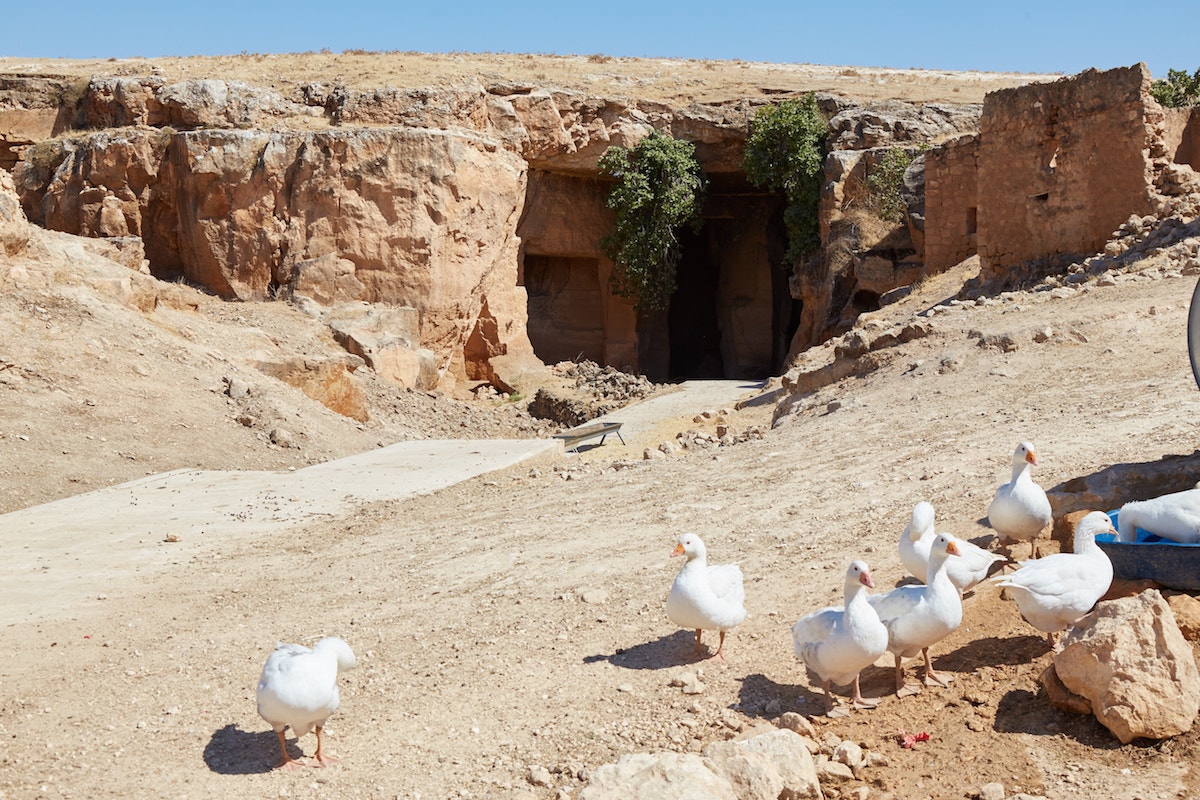
The quarry was in use from the 2nd century AD all the way up until the 13th century. The caves which formed as a result are massive – much more vast than photos can capture.
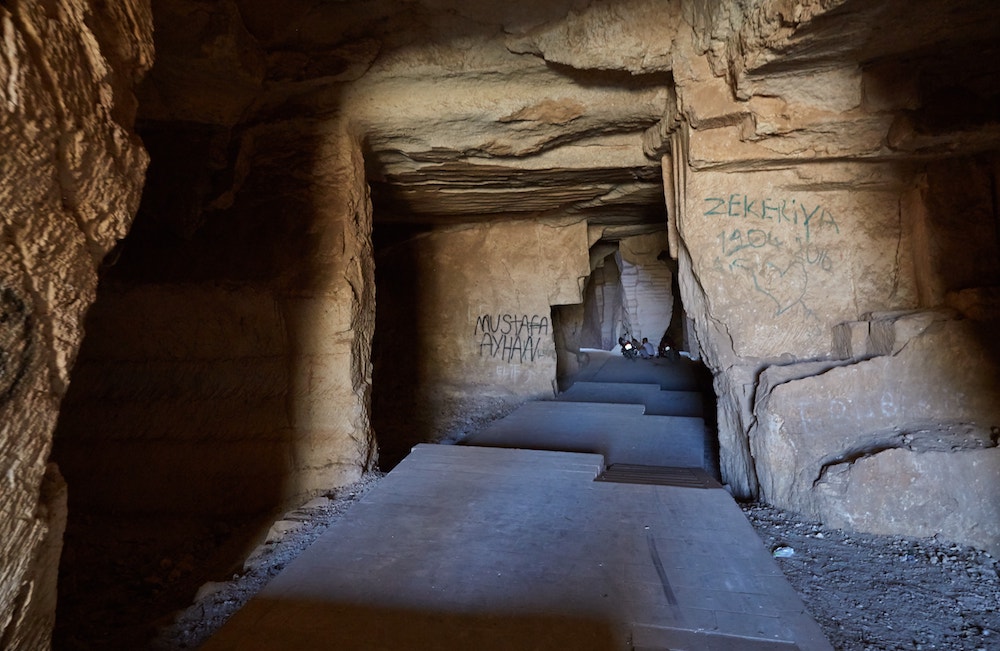
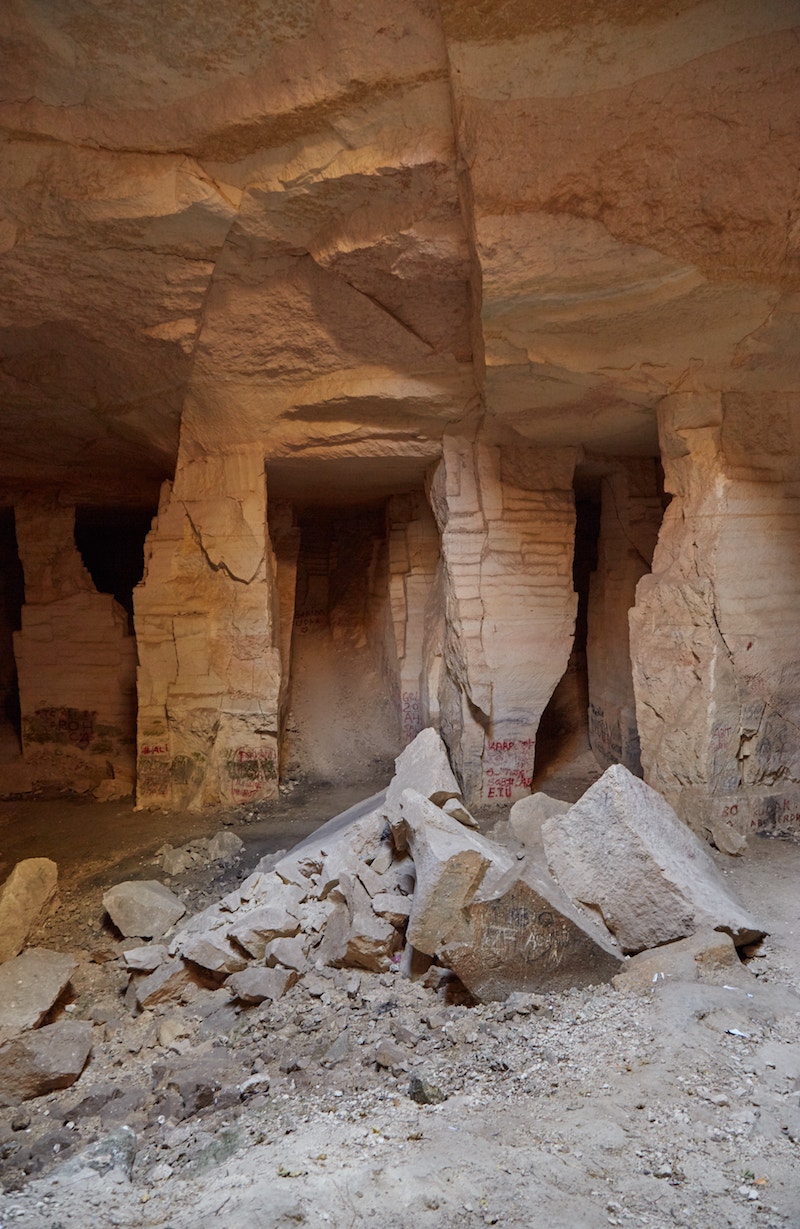
Nowadays, local youth come to relax and have picnics inside, as was the case during my visit. Sadly, the walls have also been badly vandalized, but the new security guard told my guide he’d be ensuring it doesn’t happen again.
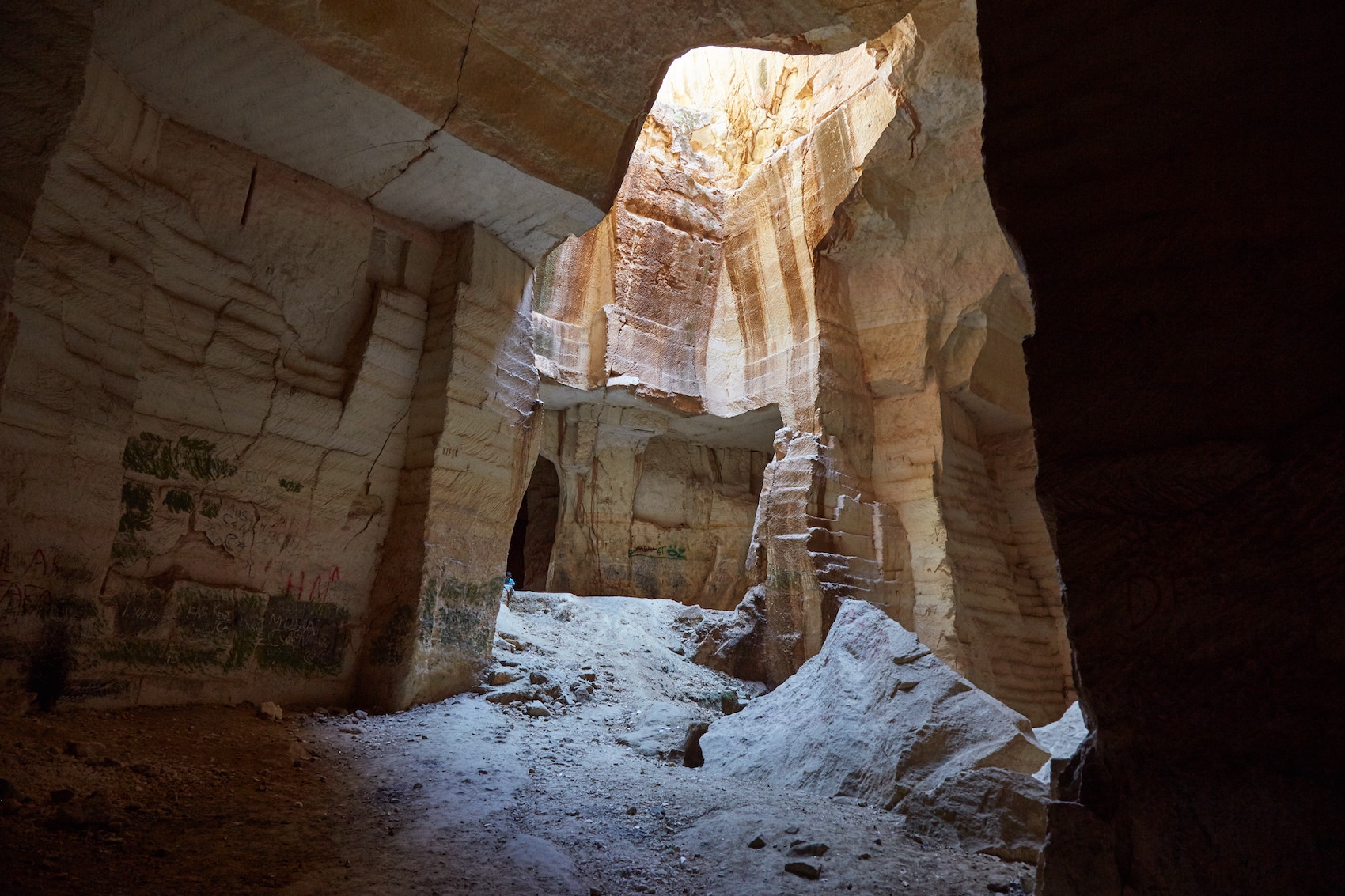
I spent about 20 minutes wandering around inside. Considering how the caverns are entirely manmade, I was in awe of what massive engineering projects people back then were capable of.
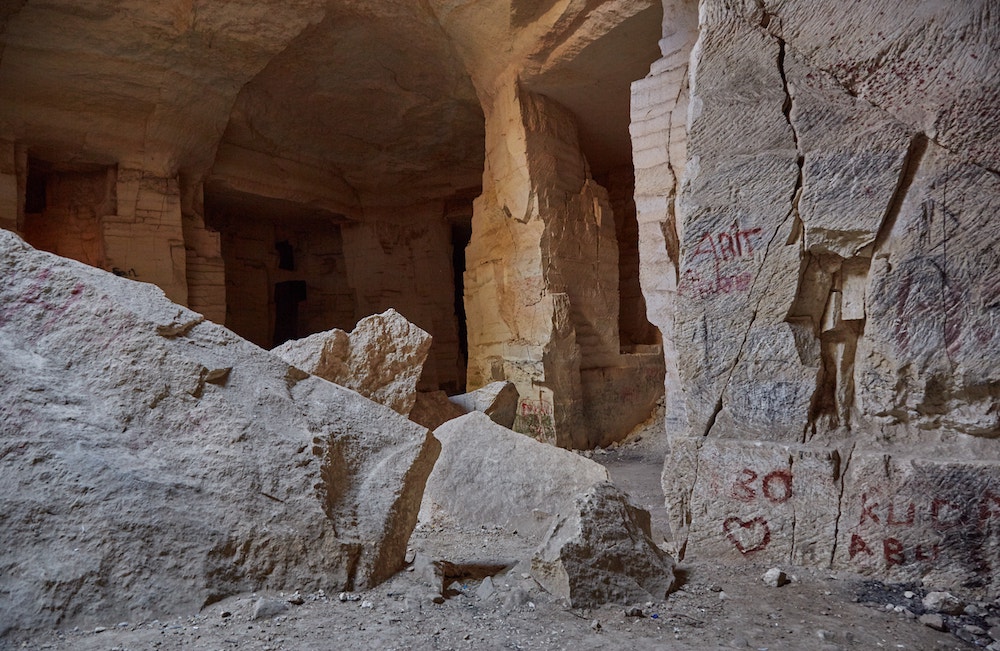
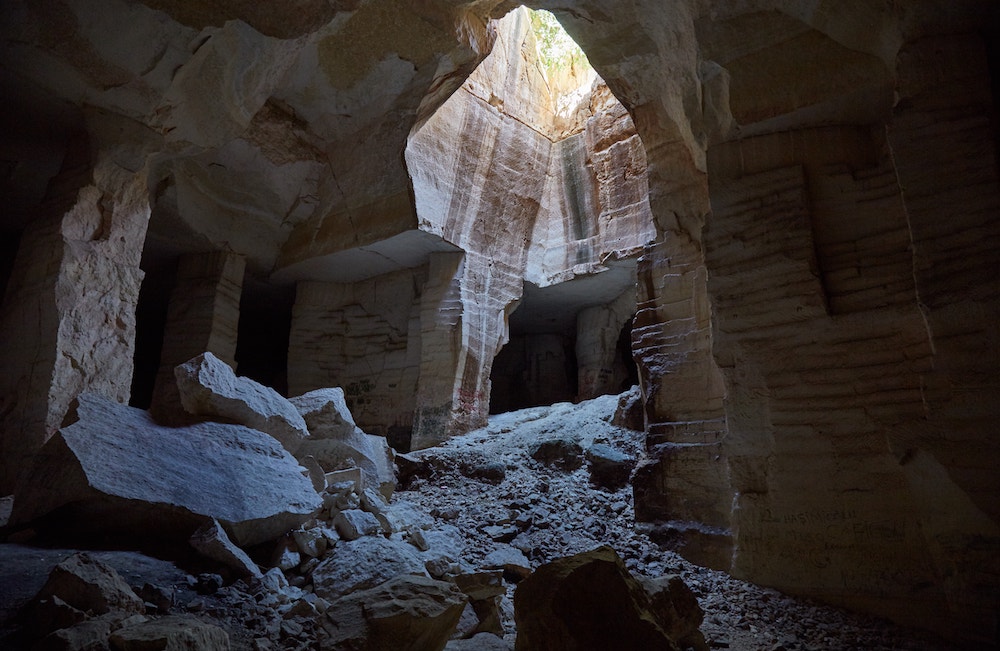
As mentioned, they stopped using the quarry in the 13th century. But it’s unclear if the decision was a direct result of the Mongol invasions or if the quarry was simply exhausted. From the looks of it, if they dug just a little bit further in some places, the whole thing might’ve collapsed!

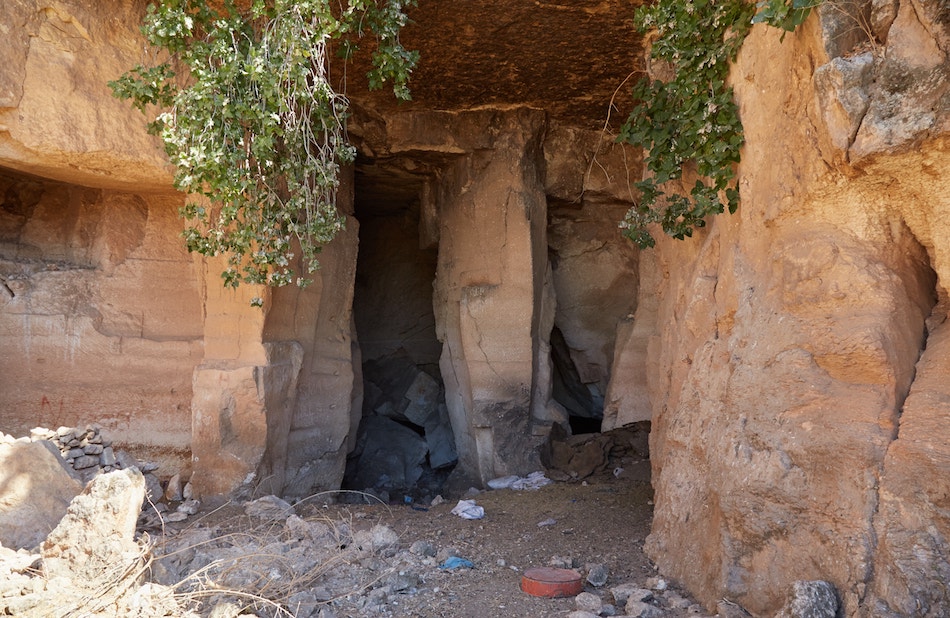
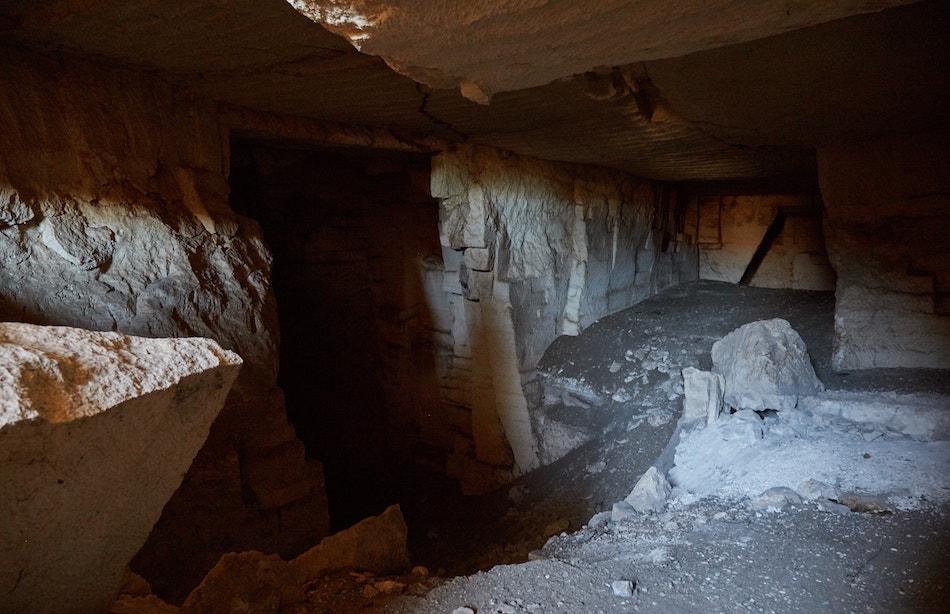
Before leaving, I checked out one of the other caves on the other side of the village. And on the ride back to Urfa, I spotted even more cave entrances in the nearby hills.
Having seen these caves with my own eyes, the rumors of underground tunnel networks built by the Sabians started to seem less like a fantastical legend. The tunnels could indeed exist, and we might be on the verge of some major discoveries in the coming years.
Additional Info
I visited the sites above combined with Karahan Tepe. They’re all southeast of central Urfa. But if you’re starting from Harran, you can start with the Bazda Caves first and finish with Karahan Tepe. The caves are just 10 km east of Harran.
I’d been looking for a driver to take me to these sites but wasn’t sure how to go about it. Most taxi drivers in Urfa don’t speak English, while few are likely to have heard of each location.
But when I was in Harran, I stopped for a coffee at the Harran Kulture Evi (Beehive Houses) where I met Ibrahim.
He’s a licensed archaeologist and guide, and he asked me if I knew of all these sites. I said that I was indeed hoping to visit these places but wasn’t sure how. He then offered to be a driver and guide for me the following day for 700 TL (roughly $100 USD).
This price also included pickup at my hotel in Urfa, though it would be even lower had I been staying in Harran.
The previous day, I’d been in contact with a driver from the website ToursByLocals who was quoting me double! I therefore accepted Ibrahim’s offer without hesitation.
Everything went smoothly as planned and visiting all of these important yet unknown sites was a great experience.
It was a full-day journey, beginning around 9 am and getting back to Urfa in the early evening in time for dinner.
If you want to go on your own, each location is fairly accurately marked on Google Maps (at least as far as I could tell). To get a head start, you could try spending the night in Harran, though departing from Urfa is perfectly doable as well.
Central Urfa isn’t a huge area. If you’re within walking to distance to the Şanlıurfa Museum or Balıklıgöl, you can easily visit all the main attractions on foot.
However, if you want to visit both Göbekli Tepe and Harran by bus, you should consider your location more carefully. The bus stops for both are around 3 km north of the city center.
I decided to look for something in between the two locations (that was also in my budget), and found the Emir Sultan Hotel.
For less than $10 a night, I had a private bathroom, decent wifi and free breakfast. The biggest downside was the lack of AC – kind of unthinkable in Turkey’s hottest city at the hottest time of year. The fan they provide, at least, was very strong. And the staff were helpful and kind.
If you’re not on such a strict budget but are still interested in taking a bus to Göbekli Tepe and Harran, I’d still recommend the general area around Emir Sultan. (Hotel Guven looks like a good option.)
It’s also by the restaurant Sumer Lahmacun, one of the best lahmacun places I visited in Turkey.
Şanlıurfa has its own airport about 15 km south of the city. It connects with major cities like Istanbul, Izmir and Ankara.
There is no rail access, so most people arrive by car or bus.
The main otogar (bus terminal) is several kilometers north of the city center. Apparently, two buses are required to get to the city center, so just taking a taxi is the best idea. As of 2020, the ride should cost 25 lira or so.
Şanlıurfa is one of southeast Turkey’s biggest cities, so in theory, there should be many direct connections with other cities in the region. But I had strange experiences both coming to and departing from Urfa.
Despite having bought a direct ticket from Mardin to Urfa, I was made to transfer to a minibus without warning midway through the ride (avoid the company Dilmenler Mardin at all costs!).
When done with Urfa, I went on to see Mt. Nemrut, the nearest town to which is called Kahta. And despite having bought a ticket which simply said ‘Kahta,’ and getting no additional info from the ticket seller, I was made to transfer at Adiyaman. (It was at least much smoother than the Mardin ordeal.)
In three months of traveling around Turkey and countless bus rides, my journeys to and from Urfa were the only times I was suddenly transferred from a coach bus to a minibus mid-ride.
While the Turkish government isn’t quite as extreme as China when it comes to online censorship, you’ll probably want a decent VPN before your visit.
I’ve tried out a couple of different companies and have found ExpressVPN to be the most reliable.
Booking.com is currently banned in the country (at least when you search for domestic accommodation). However, there are actually quite a few Turkish hotels listed on there anyway. And many them don’t even appear on Hotels.com, which hasn’t been banned.
Over the course of my trip, I ended up making quite a few reservations with Booking.com and was really glad I had a VPN to do so.
Another major site that’s banned is PayPal. If you want to access your account at all during your travels, a VPN is a must.
While those are the only two major sites that I noticed were banned during my trip, Turkey has even gone as far as banning Wikipedia and Twitter in the past.
